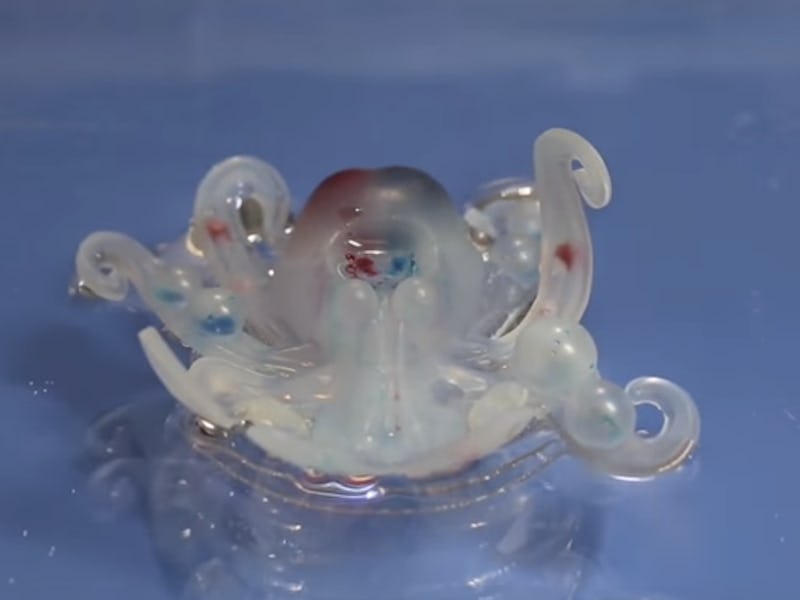If you’re in need of a soft, slithery robot friend who doesn’t require a constant change of batteries, your totally normal, not-at-all-strange search has ended. Designed by researchers at Harvard, Octobot is the first fully soft, autonomous robot to be powered by a chemical reaction.
A circuit in the robot controls when hydrogen peroxide decomposes to gas, powering its movement. So unlike other Massachusetts-made robots the Octobot doesn’t have any metal parts or batteries.
Manufacturing the Octobot is cheaper than traditional robots as well, so much so that the lab at Harvard started out by creating 300.
“The entire system is simple to fabricate, by combining three fabrication methods — soft lithography, molding and 3D printing we can quickly manufacture these devices,” says Ryan Truby, a Harvard graduate student in the Lewis lab and co-first author of the paper, in a press release.
While the Octobot may be the first autonomous robot with no hard materials (and the cutest), it’s not the first time researchers have experimented with a softer robot design. In 2012, researchers at the Massachusetts Institute of Technology created a “meshworm” model that consisted of a long, tubular body made of polymer mesh that allowed the tube to stretch and contract in a spring-like motion.
Octobot solves ones of the biggest challenge facing soft-robotics engineers, which was how to actually power them. While compressed air was successful in making robots move, pneumatic systems required bulky pumps or micro air compressors that were difficult to insert into smaller robots.
More than just opening up the possibility of making a more loveable robodog, soft robotics are safer for human interaction. Soft robots, unburdened by bulky and easily damaged hardware, can more easily explore bumpy and narrow spaces.
The next version of the Octobot will have the capability to crawl, swim, and interact with its environment.
